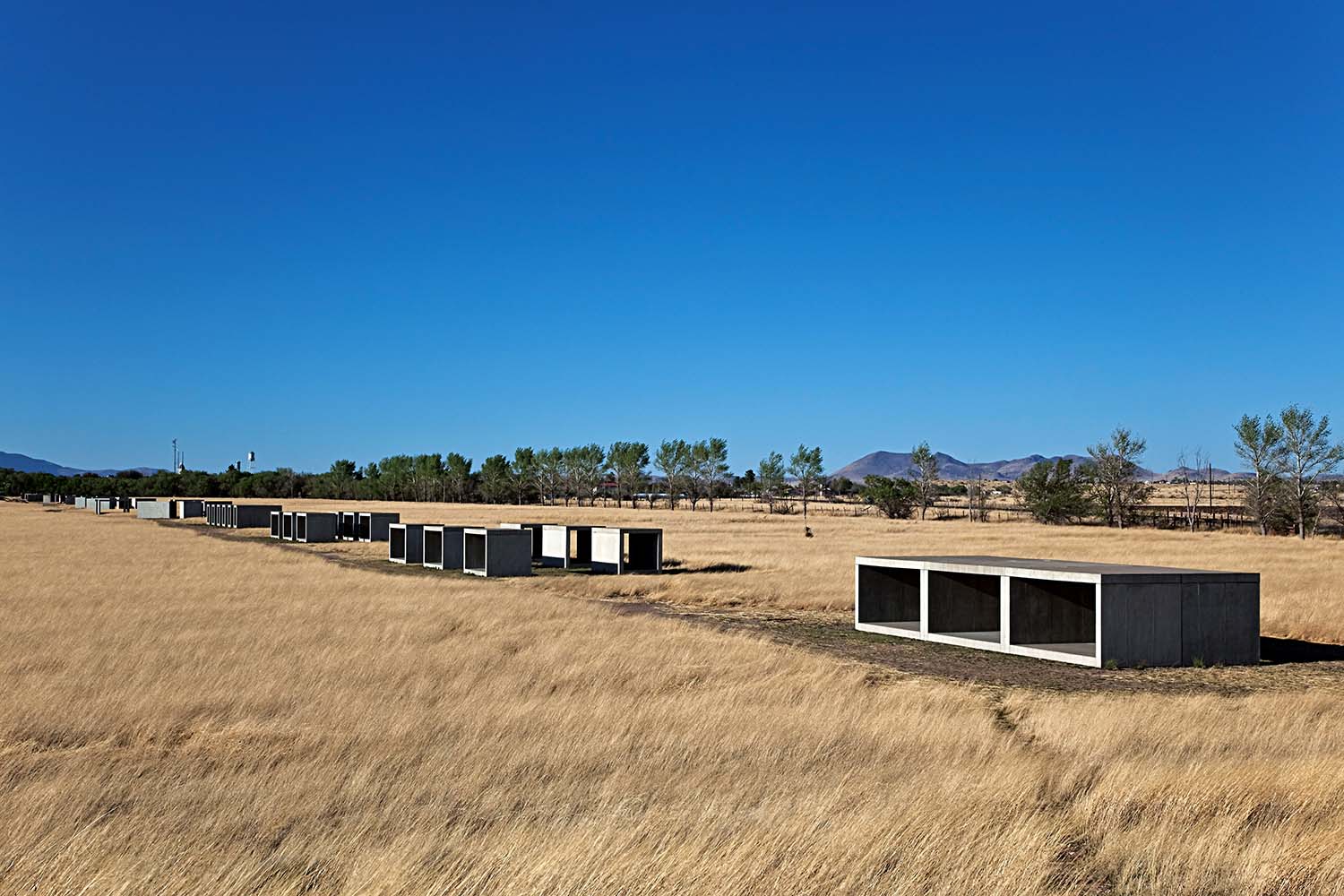In complexity theory, an attractor is a mathematical representation “of a dynamic (the systemic long-term behavior) that is intrinsic to a system,” and the space it maps out is “the set of all possible states of the system.” “Strange Attractor” at Ballroom Marfa explores the way a group show and individual works can serve as aesthetic attractors, channeling the dynamic and complex present of the Anthropocene.
Guest curator Gryphon Rue uses Edgard Varèse’s idea of composition as organized noise as a touchstone principle. Alexander Calder’s sound-producing mobile Clangors (1942) provides a physical and conceptual anchor to a collection of works that are both index and metonymy for a networked, interobjective, fluid and migrating social ecology.
In Ballroom’s north gallery, one encounters Abu Hamdan’s map-based explorations of language analysis on asylum seekers’ status, Channa Horwitz’s “sonakinatographic” compositions, Thomas Ashcraft’s speculative currency and near-infrared photographs of meteorological sprites, Haroon Mirza’s peyote electroetchings, and Phillipa Horan’s mycelium-grown sculpture of Charon, while Douglas Ross’s abstraxi (2014) centers the space around his translations of territorial images into woven yarn. Calder’s aforementioned mobile hangs in Ballroom’s center gallery; at the far end of the space, Robert Buck’s snakeskin print of a border control station in Arizona leads to Beatrice Gibson’s filmic interpretation of William Gaddis’s novel JR. In the courtyard, Lucky Dragons presents two cast-steel tuning forks used to create six radio transmissions broadcast throughout Marfa, which interweave as one moves through the town.
“Strange Attractor” offers systems for tracing new trajectories through a complex world. The show begs the question as to what extent coherence can or should be a formal criteria, as well as whether the composed “noise” Calder’s mobile suggests is a sufficient metaphor. Within the collector-and-market-driven art landscape of Texas, the show shines brightly in its attempts to exceed the limits of what contemporary art can do.




